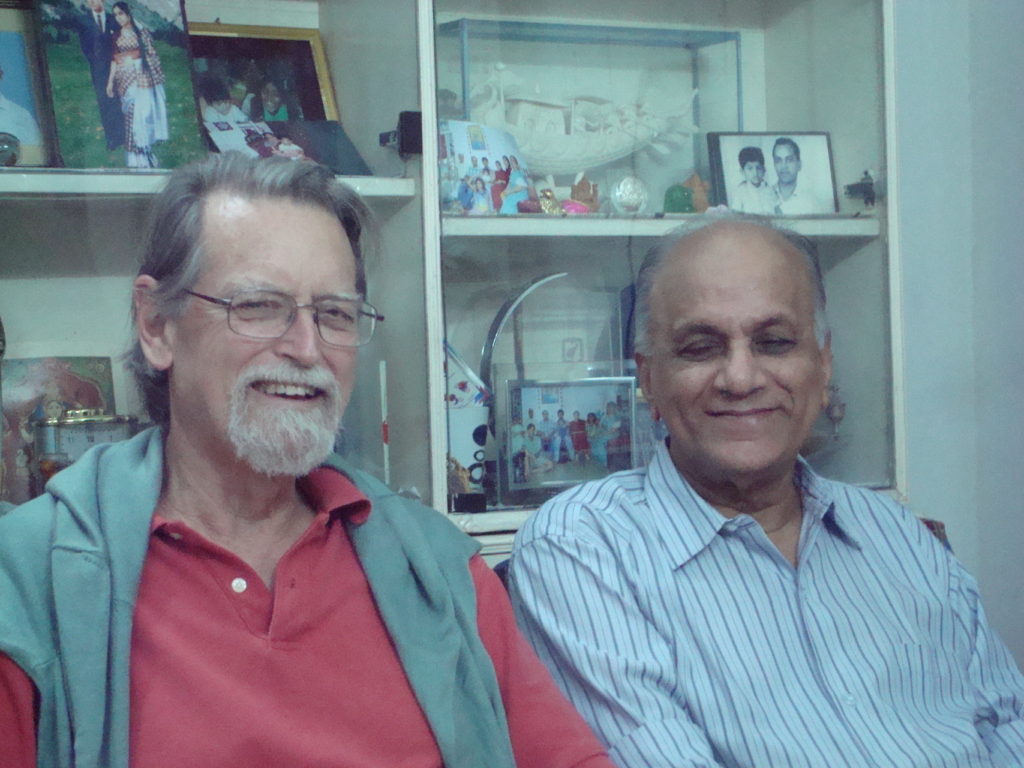
David Mumford is a world renowned mathematician whose work in Algebraic Geometry won him the Fields Medal in 1974. After getting his PhD from Harvard in 1961 under Oscar Zariski, Mumford joined the Harvard faculty before finally leaving for Brown in 1995 to pursue ideas in Computer Vision and Neurosciences. His work spans a broad range of mathematics, conforming to the formally rigorous and ironclad traditions of the Bourbaki in the initial years, while later going on to explore a highly intuitive and computer-assisted discovery of patterns and forms – with the latter passionately exemplified in a jointly authored, avant-garde book “Indra’s Pearls”. Here he relives his younger days, his strong India connection, and on the ideas that have held his attention all these years.
Could you please tell us about your place of birth, and your parents?
DM: I was born in England, in Sussex, in a small town called ‘Three Bridges’. My mother, whose maiden name was Grace Schiott, was half Norwegian, and half American herself. And my father’s name was William Bryant Mumford. He was hundred percent British.
Were your parents themselves interested in the Sciences, and where did they hail from?
DM: No, neither of them were interested in the Sciences. My mother’s father was Norwegian, and he loved sailing and astronomy and also had a telescope outside his house, which I found very intriguing. It also triggered later on my own interest in astronomy. And my father’s mother was one of the first women in Cambridge University to study mathematics. She loved mathematics, and later went on to study psychology.
Was there anyone in your own circles, or even from the extended family, whom you remember or count as a major early positive influence on your eventual life as a scholar?
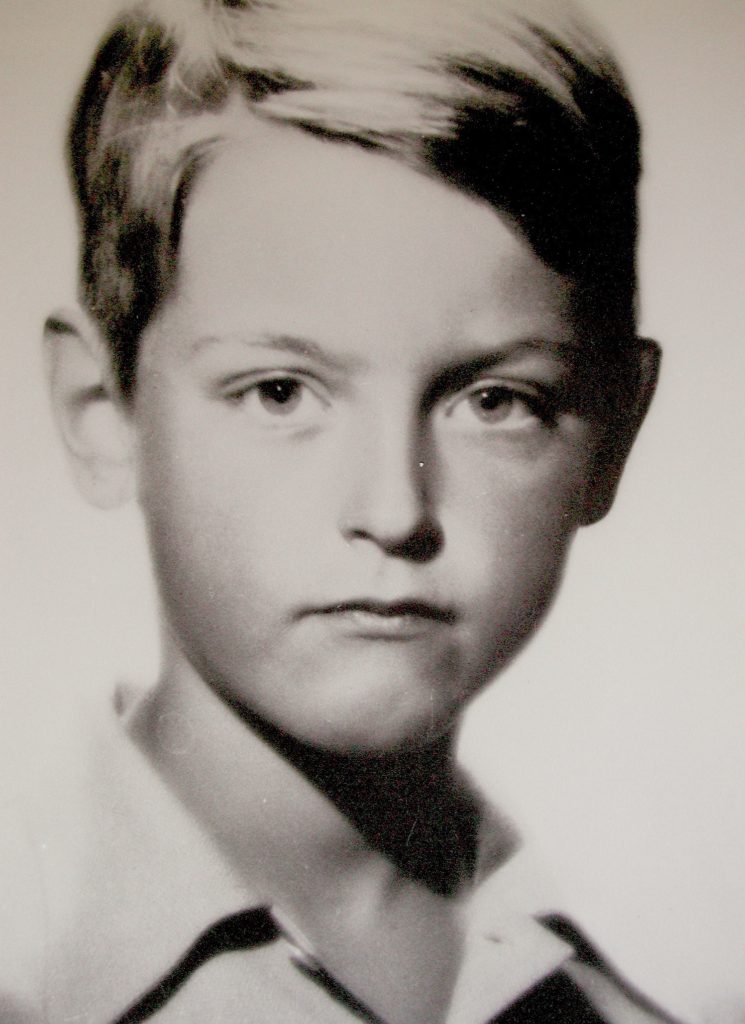
DM: I think that in some ways the thing that struck me the most was that we had these artist friends Edna Ginesi and Raymond Coxon, who visited us frequently at our home. They were once painting on the porch of our house. I remember going to Raymond and saying, “Who’s paying you? What are you doing?” and he said “I just work for myself. I paint, and sell my paintings.” And I thought, “Oh my God, why does anyone have to work for somebody else? It’s so much nicer if you choose what you want to do yourself, and maybe someone will even pay you for it.” So I had a big early impression that you can earn a living by doing something that you actually enjoy tremendously.
WWII started when you were barely two, and by the time you were ready to be admitted to school, the war had ended; but the world had been transformed into a vastly different place, in more ways than one. Since you were actually born in England, and have both European and American ancestry, what was the reason for your family shifting from Europe to America?
DM: Well, my father had been working both in the British Colonial Service and in the University of London, where they had a department in Colonial Education. And then when the war started, he even had a small boat. He had participated in the evacuation of British Soldiers from Dunkirk, taking his small little boat across the channel. Obviously he wanted to do something to help England during the war. Also because of his connections in America, he had even taught at Yale at one point, and had friends both in Canada and the US. As you very well know, the Americans resisted getting into a European war until Pearl Harbor took place. He joined what was essentially a propaganda organization which worked hard to explain to Americans what was going on in Europe, and how the British were struggling and dying to defend their country. Eventually he came to the US to run this organization, and it was then called the United Nations Information Organization, with an obvious connection to the later United Nations. So he was working in New York, while we lived in Connecticut.
Where did your schooling take place, and was there again something ‘singular’ from those days that suggested to you that a full time career in academics was a distinct possibility?
DM: I went to a local private school in Connecticut whose name was Unquowa, named after the local native American tribe. I remember being fascinated by science at the time, and as I mentioned, astronomy was particularly fascinating, along with electronics. One of the things I remember vividly was getting a wire strung under the eaves of the house, from one side of the house to the other.
I had a big early impression that you can earn a living by doing something that you enjoy tremendously
And then I hooked up a little wire to a crystal set. I mean all it consisted of was a crystal, and a little wire that you poke on it. Was there a coil in the circuit? Maybe! It had some earphones too, and then by rigging it all up, you get the wave envelope; and lo, an audible signal! I mean it was kind of crazy, because all there was to it was just a little wire and a rudimentary circuit, and virtually out of nowhere comes this little voice – a faintly audible electronic signal. That totally thrilled me at the time. I had become thoroughly American, actually losing my British accent which I had when I showed up in America at the age of 3, dropping it real fast. I recall a funny incident from those days when I knew my father was very angry. In 1948 the first post-war Olympics was held, and my father comes home from his office, and I say, “Isn’t it great? The Americans have won such and such, and such and such medals!” He looked at me with a stormy look and said “The English haven’t won any yet.” At that moment, I realised that I had already become very American. And in fact, later on in high school it was sort of clear to me that America was having a boom, with so many European scholars who had come to the US. The US was clearly the ‘wave of the future’. So after Unquowa, I went to Phillips Exeter Academy, a private school in New Hampshire, and that was truly a fantastic place. Among all the private schools, the great thing about Exeter was that it had a very strong science program, and I absolutely loved that. I ground my own lens for a 3 inch reflecting telescope under the tutelage of Mr. Brinkerhoff. I got fascinated with electronics, and I know I made at home, many of these what we called “heathkits”. They were these kits where they send you this whole mess of resistors and capacitors and so on. I had my own soldering gun, and would wire them all up. First I’d make a little calling bell; and then I wound a coil around a metal to make a little motor, and so on. I was really thrilled by all of that.
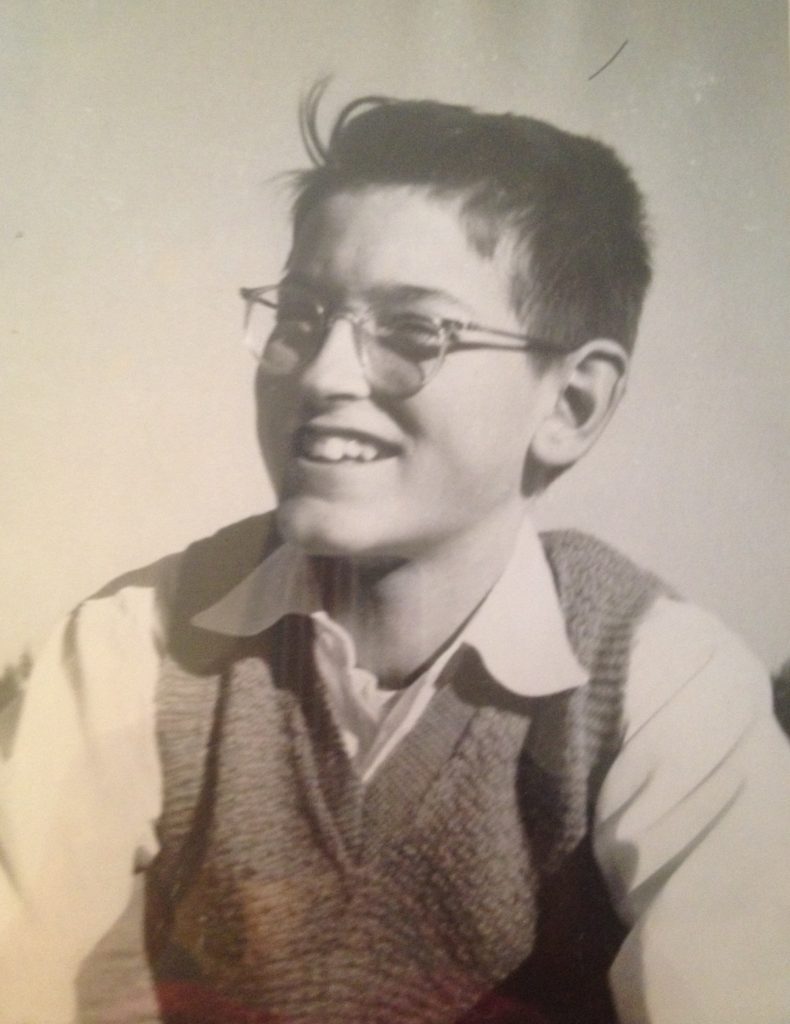
Do you remember any teachers, or mentors outside your family from those years, say between the ages 13 and 18, who influenced you positively?
DM: I certainly had excellent teachers at Exeter, but math was not the center of my interest at that time; it was definitely science, and certainly electronics too.
Did you participate in any major state or national level Science competitions of that era; and if so, what did you actually present there?
DM: Yes, indeed. I entered what was called at that time the Westinghouse Science Talent Search. That was a nationwide program which high school students could enter, and I had read articles about computers in a magazine called Radio Electronics. Somehow I got to know a guy who said that you could construct a small computer out of relays. So I discovered at Exeter that they had a whole surplus cache of these WWII relays. So I said, “Oh, can I use these?” and they gave me a 4 by 8 sheet of plywood. I screwed them to the board there and wired things up, and quickly had my own little home computer. I had some paper tape that they then used for checkouts in stores, and also had a little homemade paper tape reader into which I could punch instructions. That was the downfall, actually, because ultimately the machine burned itself up because a spark came up when the paper tape reader jammed, and the wood caught fire. Anyway, the computer did work for a while. I mean its great achievement was to multiply any two 4 digit numbers, which was also supposed to be its limit. I even wrote out a rather elaborate program for that. So, I won one of the top 40 submissions in the Science Talent Search, went to Washington and also met Harlow Shapley the astronomer, who was the head of the committee running the competition. I was totally thrilled by all of this. But in the end, I was a little tongue-tied and I think I screwed up by forgetting the atomic number of Oxygen. That lapse disqualified me from getting the top prize. 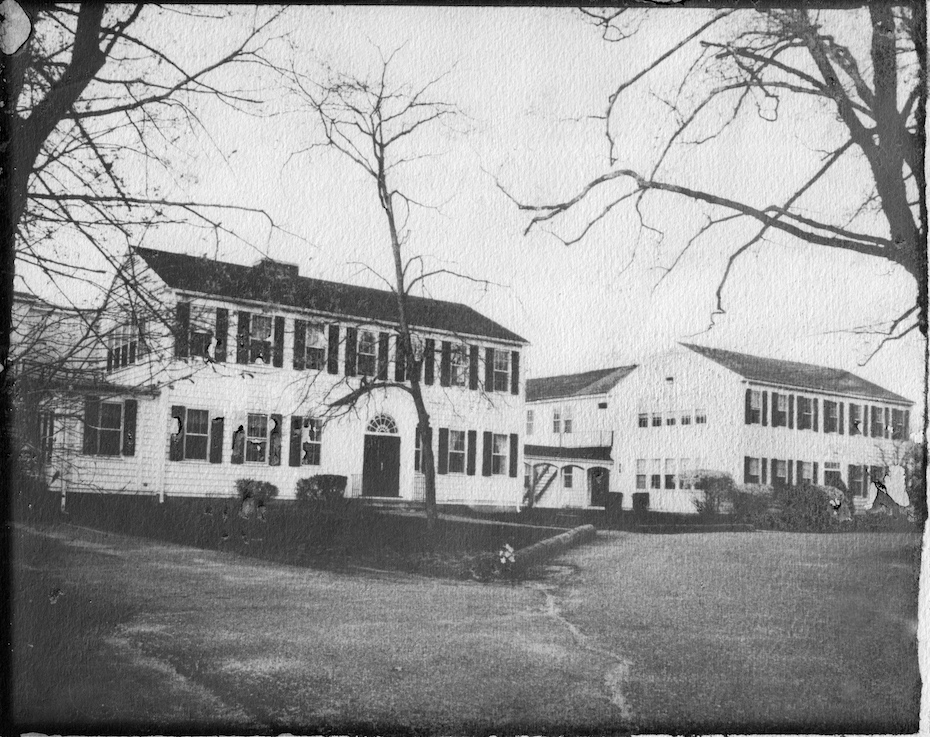
You joined Harvard for your undergraduate course, which given your then already very promising track record, was hardly a surprise. Did you contemplate joining any place other than Harvard?
DM: The reason I later went on to Harvard was primarily this guy John Finley, who was a Professor of Classics at Harvard. He went around beating the drum to get all the best students to apply to Harvard (though all male in the days before Harvard and Radcliffe merged). In one such visit, he talked about ancient Greece and I was just hypnotised by the magic and the culture that he spun in the lecture. I then thought “Oh my God, professors at Harvard are like that? I gotta go there.” And, I did.
Lead us through your undergraduate days at Harvard in the mid-50s, and of the general mood around the University, including its hallowed halls, and famed dorms. Was it, as the legend goes, buzzing with ideas, and also, did you make any friends from that era, and who continued to be friends with you from then on?
DM: I was a couple of years younger than my classmates and it was an obstacle. I also wanted to try drinking beer and all that too. The police in Cambridge, Massachusetts, were so cool that in liquor stores they would even lift up students who were too short to see over the counter, so that they could select what they wanted to drink. Overall, being at Harvard, I suddenly felt this incredible sense of freedom, which was just the most amazing feeling. It was thrilling also to listen to all those amazing lectures. At first, I thought I was going to be a Physics major, because I really wanted to learn quantum mechanics. I had learned a bit of special relativity, and that made perfect sense. I began reading John von Neumann’s book on Quantum Mechanics, and that was easy, straightforward and wonderful too. But then I went to attend lectures in Quantum Field Theory, and I didn’t understand a word. The way physicists think was just completely alien to my way of approaching things, I felt. Meanwhile, I had been taking math courses, and there were fantastic professors there.
Who were the dominant thinkers on campus then? Also, in particular, who were the stars of the Mathematics department at Harvard?
DM: I remember Lars Ahlfors was teaching complex analysis, and it was just so beautiful and exciting. But more than anybody else, it was George Mackey who took me under his wing. He was then what was called a tutor at Kirkland House: where undergraduates were divided up into 8 houses or so, and where you ate your meals and slept. He took me under his wing, and I would read his lecture notes from previous years and ask him questions. It was George who introduced me to the Bourbaki vision of mathematics. I should say that earlier I had been quite fascinated by mathematical logic, and had read various books about predicate calculus, set theory and so on. So I knew some basics, but this idea of the Bourbaki style of developing mathematics out of nothing was so novel. You have a set, and you put maps between two such sets. Composition laws of the set cross the set to itself. Then you put in the axioms, and see how the whole abstract development of all the hierarchy of mathematical subjects in the style of Bourbaki emerges. It was thrilling, and I really learned all of that through George. Andy Gleason was there, and he used to routinely whip me in the game of Go. He would give me nine stones and still beat me soundly; it was pathetic. I was not all that good at either Chess or Go.
George Mackey introduced me to the Bourbaki vision of mathematics
How exactly did the legendary Russia-born, Italy-educated, American mathematician Oscar Zariski become your PhD thesis advisor? What were the circumstances that led you to choose Zariski as your advisor?
DM: I had a friend in Kirkland House by the name of Peter Falb, who first went into Algebraic Geometry, but then later on switched to Control Theory. One day he said to me ,“Come with me, let’s listen to what Oscar Zariski is talking about.” And I said, “But I won’t understand a word as I haven’t done the prerequisites for the course he is teaching in Algebraic geometry”. To which he said, “Eh, let’s just go.” And so, I did. I was hypnotized by Oscar Zariski as a person. His love of mathematics, his voice even as he described things; I mean, he really did sound as though he had the metaphorical keys to the lock of a secret garden. And when you got in there, you had all these things playing out there in this beautiful place; he made you feel like you were Alice in Wonderland, inhabiting this beautiful universe.
I was hypnotized by Oscar Zariski as a person
It was clear to me from the way he lectured, that this universe of ideas was not just real, but utterly real. This experience totally fascinated me, and of course I later took many more courses from him, and eventually got very close to him. I could also tell that certain things were the hot topics of the day. At one point actually, Andy Gleason tried to give a course on Cohomology, and I thought “What the hell is going on?” I could not even remotely figure out what the whole point of it was. It seemed like the weirdest, and the most meaningless thing. It wasn’t clear to me till Alexander Grothendieck and Jean-Pierre Serre came visiting Harvard, Serre arriving earlier than Grothendieck. Only when I read Serre’s ‘Faisceaux Algébriques Cohérents’, which really is about taking hundreds of ideas from classical Italian geometry and putting them all in a cohomological setting, did I realise the power of this new machinery. Of course, Grothendieck had realized it earlier, and understood it even better.
Looking closely at Zariski’s mathematical genealogy, we encounter the legacy of Guido Castelnuovo, Federigo Enriques and Francesco Severi – legendary Italian mathematicians, all of whom taught Zariski during his own PhD days in Rome. Did Zariski speak about his student days in Italy with you? What were his own impressions on the Italian school’s approach, famed for its intuition, but which was supposedly less rigorous than the approach favored by mathematicians outside Italy?
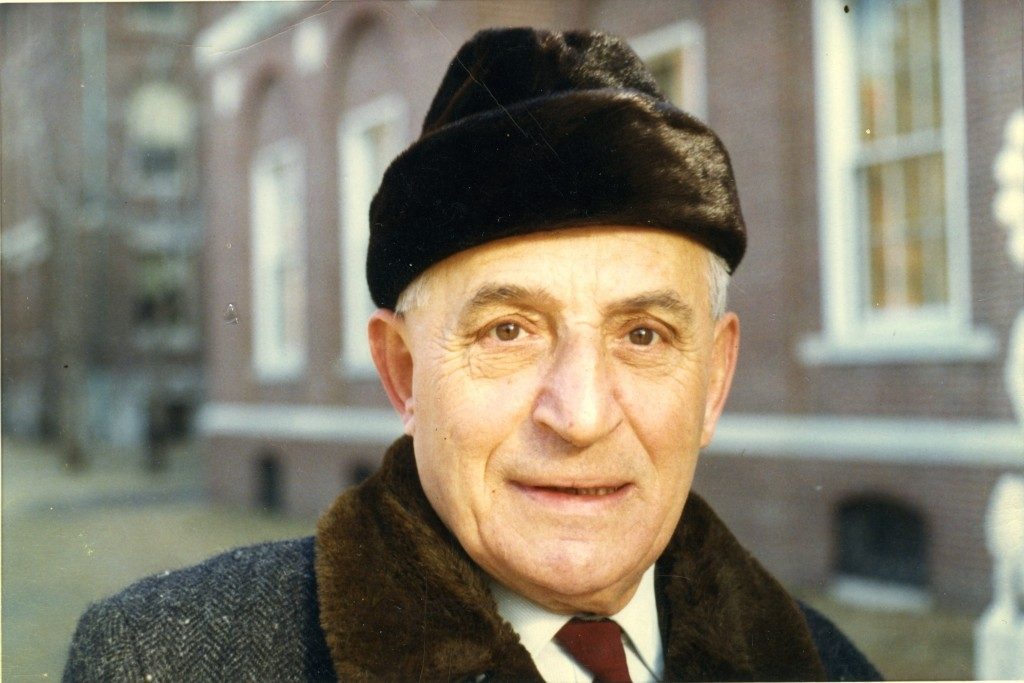
DM: Oscar was sort of distanced from Enriques and Severi, but Castelnuovo was really the person who had taught him Algebraic geometry. He was also a rigorous mathematician, as opposed to Enriques and Severi who were believers in inspiration and intuition, and cut loose time to time from the constraints of rigor. It was interesting that at this point Zariski brought Heisuke Hironaka from Japan to Harvard. Although Hironaka already had a degree in Japan, he pursued another degree at Harvard. Michael Artin who was just a year ahead of me, Hironaka and I were all studying with Oscar, and at one point Zariski says “Enriques wrote this book – ‘Le Superficie Algebriche’. Let’s read it and see if we can make sense out of it.” And so we all did. Later on, I went on to write a whole number of papers just checking whether everything Enriques had said, actually worked in characteristic p. So we had a little exposure to the Italian way of doing things. But there were other problems where the Italian approach had simply ground to a halt, like in the completeness of the characteristic linear series of complete algebraic systems on a surface. This had almost been solved by Enriques whose work on this was, in a sense, completed by Grothendieck. I had fun telling this to Grothendieck who had no idea that his work had these connections!
In a real sense, Zariski perhaps even symbolized the discontent that a growing band of mathematicians of that age felt regarding the Italian school of Mathematics. As Serge Lang puts it poetically, Zariski was the one who cut the umbilical cord that bound modern Algebraic Geometry to its classical version. What did Zariski himself do mathematically, in order to correct what he clearly felt was an incomplete approach to the pursuit of mathematical truths?
DM: For a long time people used to say that André Weil and Oscar Zariski were the only two people who understood what Italian Algebraic geometry was. That’s probably right, too. Oscar of course had students, and Weil none really because he was quite a bit harder to work with, for sure. Zariski wrote his survey of Italian mathematics, and it was essentially writing that survey that made him realize that you really had to start again from scratch. Emmy Noether was a huge inspiration for him. He realized that what was then recent work in Commutative Algebra, with the whole discovery of commutative algebra as a separate and important field, this was what was needed in order to transform algebraic geometry into a rigorous field. He wrote his two-volume book on Introduction to Commutative Algebra, and in fact, that was the basis of his course Math 250 at Harvard, which was well known to be a hard course. I remember taking it myself, his problem sets were challenging, absolutely, they were challenging.
The years that you found yourself at Harvard, roughly from the mid-50s up to 1961 when you graduated with a PhD, were exceptional years for the world of Mathematics in general. In fact it perfectly dove-tailed with the emergence and the eventual rise of the Bourbaki approach to Mathematics. When did you personally first encounter the Bourbaki style of Mathematics?
DM: In those years, the world of analysis was being completely transformed by the discovery of all the different function spaces, and the a priori inequalities that allowed you to control the classical partial differential equations. Meanwhile Commutative algebra and cohomological algebra were totally revolutionizing number theory and Algebraic geometry. So, they were indeed years of unbounded enthusiasm, and it felt as if all the big problems were falling. John G Thompson and Walter Feit had gone on to prove that all finite simple groups, other than cyclic groups, are of even order. I mean, it was indeed a time of explosive growth of pure mathematical ideas. I actually never liked Bourbaki’s books themselves, and I always found it easier to read the American versions – Paul Halmos’s version of Measure Theory and George Mackey’s lecture notes. Bourbaki was too dry.
Grothendieck breathed and thought mathematics 24 hours a day, 7 days a week
As you have remarked in some places, you have found the work of Alexander Grothendieck not only inspirational, but almost surreal. When was your first personal interaction with Grothendieck, and how did it happen? Also, why does his work compel you to admit that he is, in a real sense, even your mathematical hero?
DM: Grothendieck came twice to visit Harvard, and this was basically Oscar’s idea. Oscar had run a summer school in which they went through Serre’s paper, and he saw that cohomology was really going to be the wave of the future. But then, Grothendieck had pushed it even further, employing cohomology to give a completely different proof of Oscar’s connectedness theorem for birational maps, via formal Algebraic geometry. Nonetheless, it was still based on Oscar’s introduction of complete local rings. But, Grothendieck obviously went much further in that direction. So, Oscar felt that he had to bring Grothendieck to Harvard and expose his students to this new work. Grothendieck came in, and it was just phenomenal. I mean he was a whirlwind. He breathed and thought mathematics 24 hours a day, 7 days a week. You would ask him “Can you explain your ideas about such and such” and he would say “Absolutely, let’s see what hour we have free?”. We would run through every day of the week, and there was always another seminar that conflicted, and so Grothendieck says, “How about Sunday at 11?” Well now, Sunday at 11 is the time when all good Christians are supposed to be at Church. New England was still a fairly God-fearing part of the world, and I thought it a funny thing that Grothendieck would suggest such a time for a math seminar. That by the way didn’t work out, but somehow we still managed to squeeze in more lectures from him. You would ask him a question at tea time or at a party, and Oh, my God! All this math would then come simply roaring out of his mouth, and there was no way you could follow it. But when he lectured, it took a week or so to get used to his handwriting, as it was very, very fluid. He wrote extremely fast on the blackboard, and I once even compared it to a Japanese saying that a certain style of calligraphy was like the air blowing over a field of wheat, rippling the wheat below, even as it blows. It is called ‘Grass Writing’, and the Japanese even have a name for it, called “Sousho”. He was really remarkable. I was a pretty shy guy at the time, and so I wouldn’t say that I had a great deal of personal interaction with Grothendieck. I mean, he was intimidating to say the least. It is Mike Artin though, who really got close to him, deciding that he was going to take up working on what was at that point called Grothendieck cohomology, or now popularly known as ‘Etale Cohomology’. And I think to this day people don’t fully recognize that the field is a joint piece of work of both Artin and Grothendieck, although of course the original idea was Grothendieck’s. But Mike made some extremely significant changes – for one thing, the idea of looking at locally unramified maps, and not global unramified coverings, was central; and this was totally Artin’s idea.
All this math would then come simply roaring out of his mouth
Jean Dieudonné, a long time member of the Bourbaki, remarks that the real purpose underlying the philosophy of abstraction is not just generalisation, but actually the search for more simplicity, and greater clarity. From your own experience, could you please provide us with a simple, yet compelling concrete example that drives home this point.
DM: My problem with this is that I don’t really agree with it. For me, concrete examples have always been absolutely essential to understanding anything. I absolutely can’t get the gist of what the theory is driving at by listening only to the abstract definitions. For instance, now my former student Amnon Neeman tries to explain to me this recent work in category theory that he’s involved with. And there are all these definitions, but I need a motivating example for anything. How would you ever understand that spheres can have higher homotopy groups if you didn’t know how to map a 3-sphere to a 2-sphere with a 1-sphere fiber? You need certain concrete examples, because without them, it all simply becomes meaningless words.
What was the problem that you dealt with in your PhD thesis? What did it set you up to think about during your later years? Did your work post-PhD (up to the Fields Medal) stem from your thesis, or did you also consider completely new problems, and if so, how did you embark on these different problems?
DM: I think I always, even as a kid, loved making maps. Think of the globe as a big map of the Earth. I always felt that a map was a truly wonderful thing. Here is the big wide world that we live in, and all of a sudden you have this abstract way of seeing the geometry of everything, all at once, thanks to the idea of a map. So, the idea of moduli was always attractive, because it essentially was a map. It was the collection of all curves of genus g. I mean, what more natural thing is there to work on? I remember now that the first thing that really got me started along this path was reading the paper of Kodaira and Spencer on the formal deformations of complex manifolds. And of course the beautiful thing was that Grothendieck made it purely algebraic by introducing nilpotent schemes. How could people have ever thought about anything, even calculus for that matter, without thinking of them in terms of nilpotencies? I mean it’s the obvious way to understand infinitesimals. In any case, Kodaira and Spencer had this example of ruled surfaces. This was really interesting, as you can have a family, and it would be the same ruled surfaces all along until some special value came along, and then it would suddenly pop into a new ruled surface. In other words, we did not have a Hausdorff topology here. So, it was clear that the classification of surfaces was a little more subtle. I also felt that I wanted to understand more of the algebraic approach to classification. And we had been reading Enriques’ book on the qualitative classification of algebraic surfaces via the Kodaira dimension, for instance.
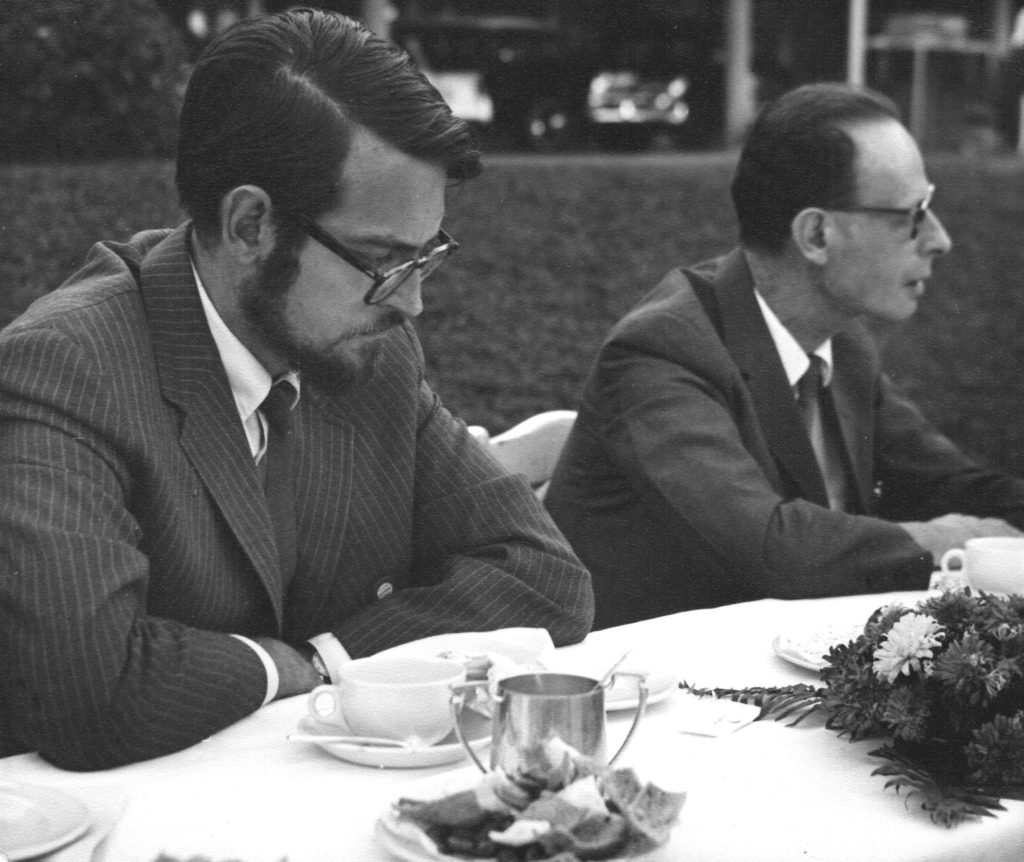 |
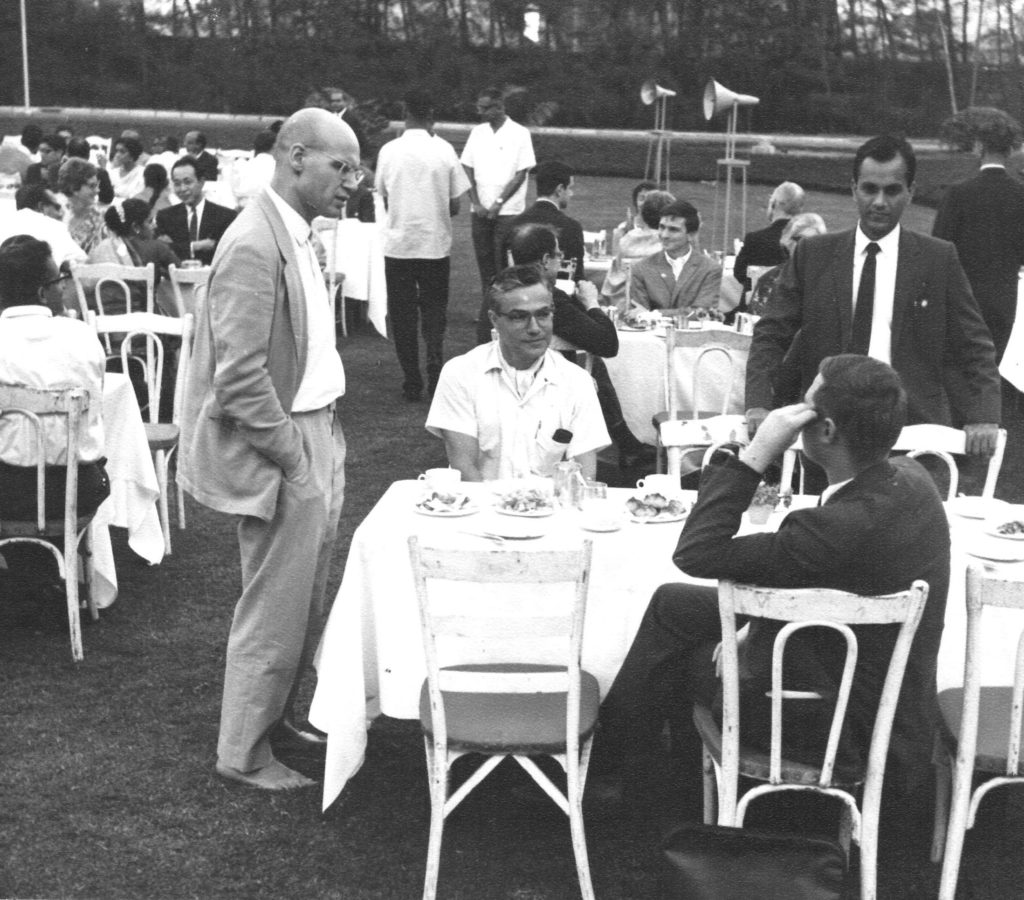 |
After my thesis, I was occupied with the idea of ‘theta functions’. I gave lectures in India, and wrote this three volume set of books, but for me this started from visiting Johns Hopkins and listening to Jun-Ichi Igusa talk about moduli; and Igusa understood lots of things about theta functions. All of a sudden, I began to realize what an unbelievable power theta functions possessed intrinsically. It also naturally tied in with my always wanting to have a concrete thing in front of me. In fact with theta functions, you can completely and explicitly describe the moduli space of abelian varieties. Describe for instance, the set of all principally polarized abelian varieties as a projective variety itself, with explicit coordinates – all given to you by theta functions. This works perfectly well with characteristic p; and especially with characteristic not equal to 2, you can even make a very explicit connection of the moduli space with measures on the 2-adic numbers.
For the benefit of our young and eager readers, could you please motivate the need to even formulate the existence of a mathematical object such as the “moduli”? What is the simplest and most intuitive way to approach this fundamental idea in Algebraic Geometry?
DM: Well you see, it’s a map. To me that’s the motivation. A lot of the work I did in the decade 2000 to 2010 was about moduli spaces in the differential geometric category. In particular, take the collection of all simple closed curves in the real plane, simply loops, you know, they can be outlines of an elephant, or they can be circles or ellipses. That’s an infinite-dimensional manifold, and the obvious question is what does it look like? What is the geometry of that manifold itself? You may also want to introduce things like a Riemannian metric into that. There are many quite beautiful metrics which can be put on it with very variable geometry, sometimes with positive curvature, sometimes with negative curvature, Anyway, that was an area that I just wanted to make a plug for, together with my collaborator, my very close friend Peter Michor, who is a differential geometer in Vienna. Similarly, if you consider the set of all algebraic curves, you want that set to be an algebraic variety itself, which is only natural. It’s this sort of weird thing that I don’t think anyone has ever fully understood – but when you classify objects of some type, the classifying space, again and again, turns out to mirror to a certain degree, the very object you are classifying. So, this is how my theorem with Joe Harris that moduli spaces of genus up in the 20s or higher are themselves varieties of general type, fits into the above point of view. But for me personally, it’s a God-given space. There is one moduli space, one for each genus. It’s simply out there in the universe. It’s as real as having the planets of the Solar system, all circling around the Sun.
We come to the ICM of 1962 held in Stockholm when you were barely 25, and where you presented an idea that had to do with the notion of the so-called “Stability” of vector bundles. Can you lead us to the essential ideas contained in your formulation of the idea of “Stability”, and how this idea unexpectedly ended up strongly influencing the works of two Indian mathematicians from TIFR Mumbai, M.S. Narasimhan and C.S. Seshadri?
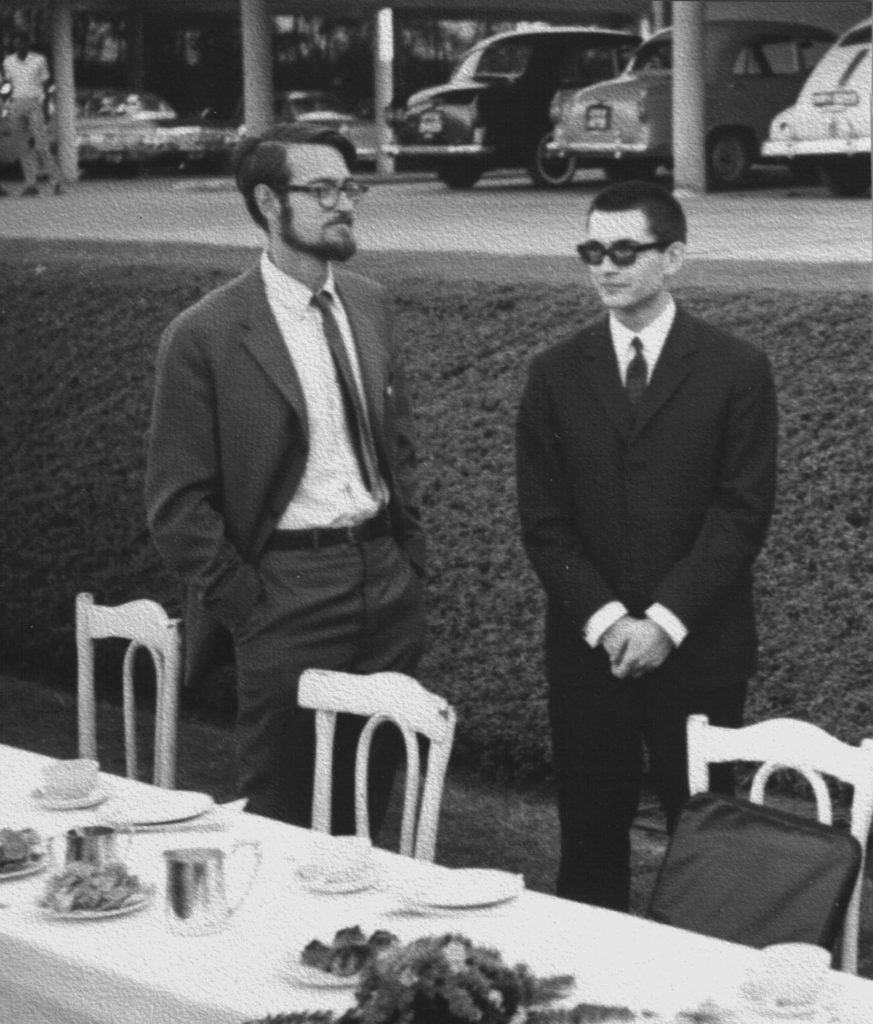
DM: When I started working on moduli spaces, it was clear that a natural way to formulate moduli spaces was as a quotient of a higher-dimensional space, on which for instance some typically semi-simple projective general linear group, was acting; so that this quotient space was going to be the moduli space that you wanted. And of course you can do that bi-rationally, just by the fixed points in the field of functions; but this doesn’t tell you that you actually have a nice moduli space, point by point. While working on these, I had gone on my honeymoon to both Norway, and England. In Cambridge, England, I had spent some time in the popular Heffers Bookshop. They had a basement with all sorts of weird old-fashioned books. And there were these 19th century books on Invariant Theory. I was flabbergasted to see that there was this huge collection of strange algebraic identities, with ways to construct invariants under typically the general linear group. Paul Gordan and Alfred Clebsch had developed all sorts of theories here. And then Hilbert, too. I began looking at special cases. What really started things off was the moduli space of n points on a projective line. Suppose you take the collection of n points, and you want to divide them out by projective equivalence, i.e, PGL(2, -) acting on the projective line. It’s perfectly clear that passing to a limit, one does not have a Hausdorff topology. The question was, can one find a big subset which behaves well?
Sitting in my Harvard office, I receive a letter with all these exotic stamps from India
And indeed, there was all this stuff in Clebsch and Gordan on explicit invariants. As it turned out, I stumbled on the fact that if there is no point whose multiplicity is greater than or equal to n/2, then you do indeed have a Hausdorff moduli space, when you divide by group equivalence. The word stable came from thinking of these n points on a seesaw, and if more than half of them all go to one side, the seesaw was going to tip down in that direction, and it was therefore unstable. So, that was where the silly word came from. And of course there I am, a few years later sitting in my office, at Harvard, and here comes this letter from C S Seshadri with all these exotic stamps from India, saying that they had read my talk in Stockholm. And that they also wanted to tell me that they had stumbled on the same space, albeit from a complex analytic point of view. And this was easily the most exciting thing in the world that ever happened to me. I mean it reminds me of G.H. Hardy, getting the letter from Srinivasa Ramanujan. The whole idea that halfway across the world, there is someone thinking about the same thing as you are, and whose ideas converge with your ideas. This was, and has been ever since, an inspiration. The idea that every single country in the world has mathematicians is in itself utterly extraordinary, and nowadays we are sadly living in a time where nationalism is coming to the fore again. I already had a Norwegian grandfather, an English father, but this was to me the clearest message that the world is one. So, the first thing that happened after being in touch with Seshadri was that I invited him to come visit Harvard, which he did, and then he invited me to come to India. He came in either ‘65 or ‘66 to Harvard, and then I know it was in the fall of 1967 that I, along with my wife Erika and my two oldest kids, Steven and Peter, came to Bombay. It was a most incredible experience. India has been so completely transformed now, from A to Z in the 70+ years since Independence, that it’s now a completely different country. But ’67 was not even 20 years after Independence, and the British Raj still hung quite heavy over the country. My family all went to the Breach Candy Beach Club, and nobody even asked if we were members. I mean we were white, and that’s all that mattered. We would enjoy the facilities, and have dosas and drinks there, and see the pictures of the English teams on the walls that played all these cricket games with each other. But, you still needed to wait for a cow to come along and only then could you cross the street safely; the traffic was as bad as it is now, but there were a lot of cows around, and so all the traffic would stop for cows, and in the melee, you could cross the street. It was an amazing experience visiting a country where there was still a culture which had lasted hundreds of years intact, and that had not really changed much. The cab drivers would all complain that under the Raj the lightbulbs worked, and that they no longer did. Of course, the TIFR itself was a dream. It was like a mirage, really. The hazy horizon of the Arabian Sea out there. It was perfect. I mean, there were fantastic students, fantastic colleagues, and fantastic working conditions, and a whole bunch of people doing Algebraic geometry. It really was, other than Cambridge in Massachusetts, the other major center for Algebraic geometry in the world. It was a fantastic experience. As you know I have been coming back to India, 15 times or so till now. Seshadri, bless his memory, was one of the closest friends in my entire life.
Other than Cambridge in Massachusetts, TIFR was the major center for Algebraic geometry in the world
What are your impressions on Ancient Indian mathematics? In 2006, you even offered a course in Brown University, on the History of Mathematics, wherein you compared the major civilizational contributions to Mathematics, down the ages. In particular, we would like to hear your thoughts on the Indian invention of the idea of the numeral Zero, an ancient idea though recently reinvigorated again in public imagination, thanks to a more accurate dating of the Bakhshali manuscript?
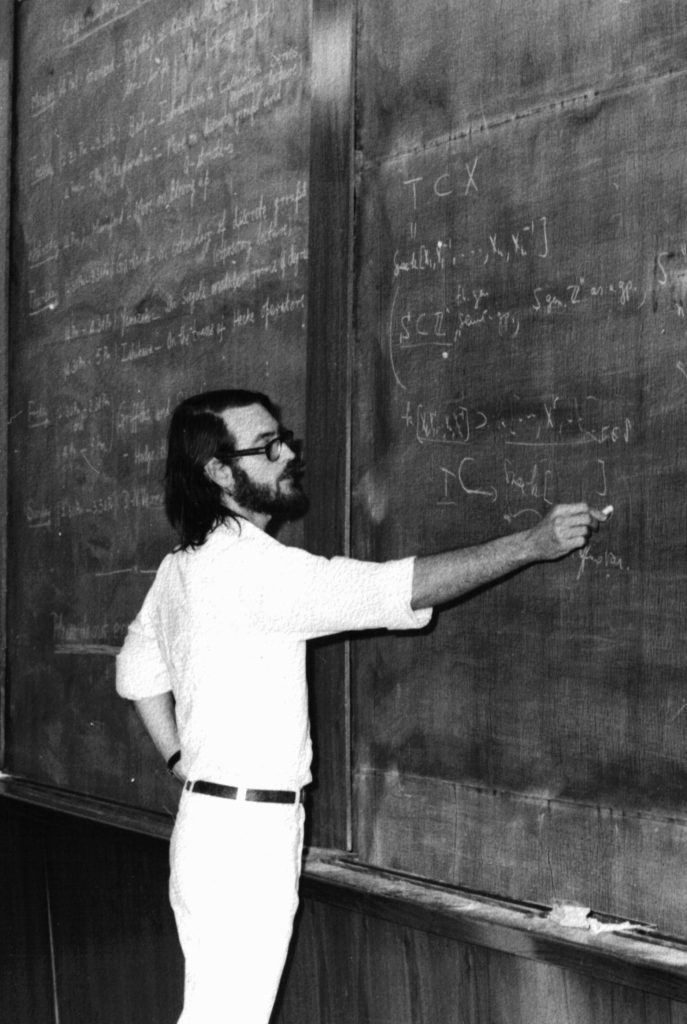
DM: What was a real revelation to me, I think, started with fairly casual conversations – by my learning bits and fragments about Ancient Indian math. But when I began to study it seriously, the message that it drove home to me was that it is extremely rare in the history of the world, that you have parallel things happening in different countries, which you can even directly compare with each other. I mean, usually history is a one-off; events happen in a place at some point in time, and there is no way the same circumstances ever repeat. But India, China, and Greece – all of them essentially discovered math (with a few caveats here), independently of each other, and developed math each in completely characteristic ways. So you can see how local culture has had a tremendous effect on the nature of the mathematics they discovered, and the way they developed it. And you can also see these tremendous parallels, where for instance the Chinese remainder theorem is a theorem which really was independently discovered in Greece, India and China. But on the other hand, prime numbers, for instance, were an idea that fascinated the Greeks, and as far as I know, didn’t really take hold in the other two places – certainly not in China at all, and only marginally in India. It’s just absolutely fascinating to see, and it’s my sense that really one of the major formative influences in India was Sanskrit itself; the complexity of the language, especially its grammar and prosody. People began counting things, and it is a common feature of all these three ancient cultures that math developed in parallel with astronomy. This I think is a universal thing, as astronomy literally screams out to count things. How many times is the moon going to go round the Earth in a year? Unfortunately, the answer is not an exact number, and you can do a continued fraction expansion of that number and see what are good rational approximations to it; and if you observe certain periodicities, you can do the same with the planets.
Seshadri, bless his memory, was one of the closest friends in my entire life
Another thing which is also characteristic of India and Greece, but not so much of China, is this fascination with absolutely huge numbers. And I think it’s pretty clear that astronomy had a lot to do with that, most certainly in India with questions such as how long a ‘yuga’ was, and going on to ask similar questions of the ‘mahāyuga’ and ‘kalpa’. In Greece, Archimedes clearly got carried away with gigantic numbers. His eponymous cattle problem is a beautiful example. In essence, you have parallels, and you have differences. I think it’s completely pointless, and therefore has no real force in trying to say that any one of these was better than any other. They were all different from each other. The Chinese were extremely practical, and in spite of the fact that they were obsessed with keeping their history, they have also destroyed, unfortunately, a great deal of their really ancient history, of the time prior to the Han Dynasty. So no one knows when, and at what point, the Pythagorean rule for right angled triangles was discovered in China. You asked me about the number zero, and actually regarding that, I have a bugaboo. I think it’s a ridiculous business, this obsession with the number zero. I mean what’s much more significant is simply writing gigantic numbers with appropriate place value. And of course, you can have a gap in the place value, if there is no number to write down there. The Babylonians were doing this in 2000 BCE in order to do decent accounting, and they did it to the “base 60”. They wrote these numbers down, and they left a gap where we would write “0”. But the gap was a little bit awkward, because you didn’t know how big a gap it should be, but already in the near East around 600-700 BCE you have astronomical manuscripts, in which dots were used to indicate that there was a zero there. Of course, the idea of nothingness is very deep in Indian philosophy, and you can see intimations of this going back to the Ṛgveda. But, I don’t find any particular excitement in it. The Bakhshali manuscript is really fabulous, but what I find much more important is the occurrence there of rudimentary formulas, algebraic formulas. They actually had a whole notation for writing down identities between numbers. It was Algebra that was another tremendous contribution of India – use of multiple words, especially colour words for different variables is seen in India. Diophantus only had one word for a variable, and so when he had to make a substitution of one equation into another, he just had to stand on his head with complicated circumlocutions, to describe what he was doing. Everyone says Al-Khwarizmi did a lot. I think Al-Khwarizmi learned all his algebra from Bramhagupta, that’s what I understand. It was copied and transmitted through the near East.
Classifying spaces frequently mirror the very object being classified
I think that’s where Islamic algebra started. Sadly, all these things have become so political. I should not forget to mention the Indus Valley civilization and its influence on India, on Indian mythology, its rituals, and so on. My good friend P.P. Divakaran, is deeply engaged in these studies. Coming to the idea of Pythagoras and its occurrence in the Indian context – It occurs in manuals for the construction of fire altars, used for the sacrifice of animals. These had to be constructed by precise geometric rules, and so you have Vedic rules spelt out for the same. The whole collection of rules regarding how exactly one is supposed to carry out the sacrifices, and the mathematics required for the same is laid out clearly. Compare this with Babylon where Pythagoras’ rule was used more for taxation purposes, and where they needed geometry to measure agricultural fields and assess taxes appropriately. Also in order to lay out cities, the Pythagorean rule is extremely handy in that it gives you a way to create right angles, when you are laying out the foundations of a building, or even while drawing boundaries between fields. In another direction, Pāṇini’s grammar has many aspects which foreshadow the whole of modern day computer languages; including ideas from Computer Science of using abstract notations to refer to various classes of objects, and the mutual relationships they hold with each other. Piṅgala’s prosody leading to combinatorial mathematics offers another peek into the different roots existing in Indian mathematics, all of which were very significant.
There is one moduli space, one for each genus. It’s as real as having the planets of the Solar system
In a recent work you studied the method used by Chinese astronomers to predict Eclipses. This was followed by a work by Jayant Shah that compared contemporaneous methods by Indians, to predict eclipses. What do these findings teach us about the sophistication and the robustness of models of prediction used by our Indian ancestors?
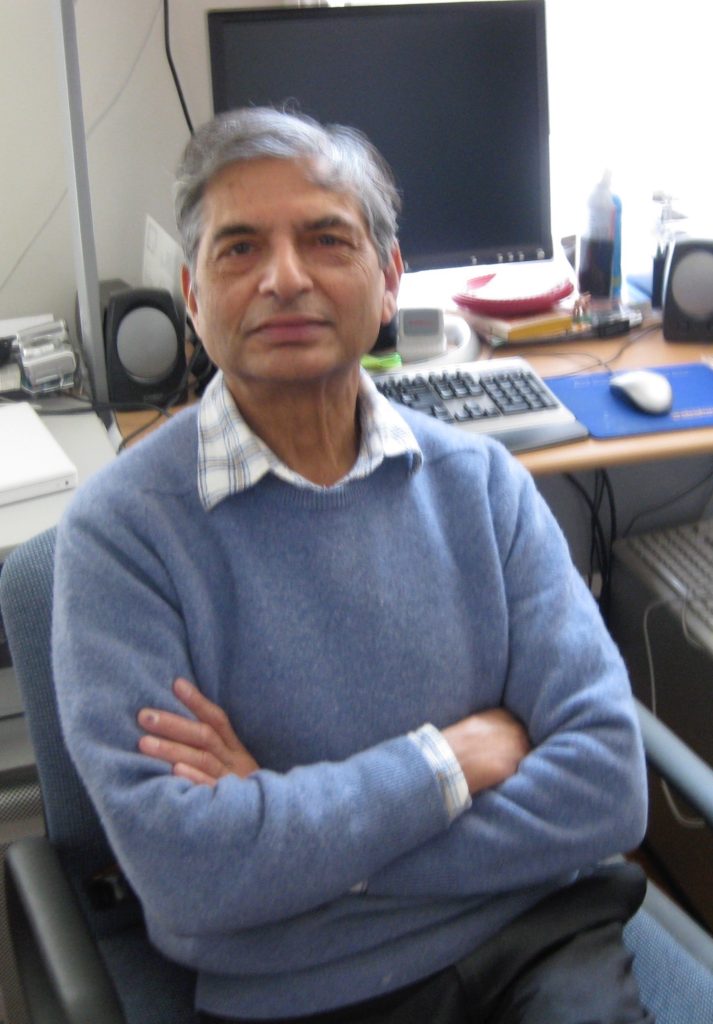
DM: It isn’t just in the three great civilizations of the ancient world, but also in many minor ones too that eclipses have played a big role. In China, if you as the Emperor couldn’t predict the eclipse, it simply indicated that you did not have the mandate of Heaven behind you, and it was therefore legitimate to chop off your head, and get a new emperor in there. I was really lucky to collaborate with Jayant Shah, in reading the ancient manuscripts, and we had a collaborator Qu Anjing from China, who helped us with all the Chinese material. For those of you that are not obsessed with eclipses, the reason why it is so tremendously challenging, and also is an important driver for mathematics, is ‘parallax’. A total eclipse of the Sun is only seen on a small path that crosses the Earth from one point to the other, during the time of the nodal crossing of the moon. Why is it only seen in one path? It’s because when you are in different parts of the Earth, the moon is in a different place in the sky, relative to all other celestial bodies. From the moon being directly overhead, to the moon being directly on the horizon, it changes its position by about 1 degree against the stars, and hence 1 degree against the Sun also, because the Sun is much further away than the moon. This parallax is incredibly hard to understand without a geometric model, and a certain amount of mathematics. This idea was developed in India and in Greece, but not in China at all. Oddly enough, the Chinese had these amazing algorithms, to simulate something like parallax, but they had no model to justify why this was the case. It seems very likely that they learned this from visiting Indian astronomers in the Tang Dynasty. But one should be aware that it also appears that the Indians were indeed influenced by the Greeks in their early astronomy.
Pāṇini’s grammar has many aspects which foreshadow the whole of modern day computer languages
The idea of epicycles, as far as I know, doesn’t really occur until after the Greek influence starting with Alexander’s conquest, and the time of the Indo-Greek empire in Pakistan and Western India.
What are your thoughts on the 7th Century Indian mathematician Brahmagupta, especially on his idea of composing any two known solutions of certain types of algebraic equations, in order to generate a third. Can this be seen as the genesis of an idea that simply had no precedence in the past, and thus truly engendered and bequeathed the seeds of the operational idea of symmetry, so central to modern algebraic thought? If so, happening as it did in the 7th Century, a full millennium before the likes of an Abel, Galois and Lie, does it qualify as the earliest known example of the seeds of modern algebraic thought? As you doubtless would have noted, this idea also directly bears on the very name of this publication, Bhāvanā!!
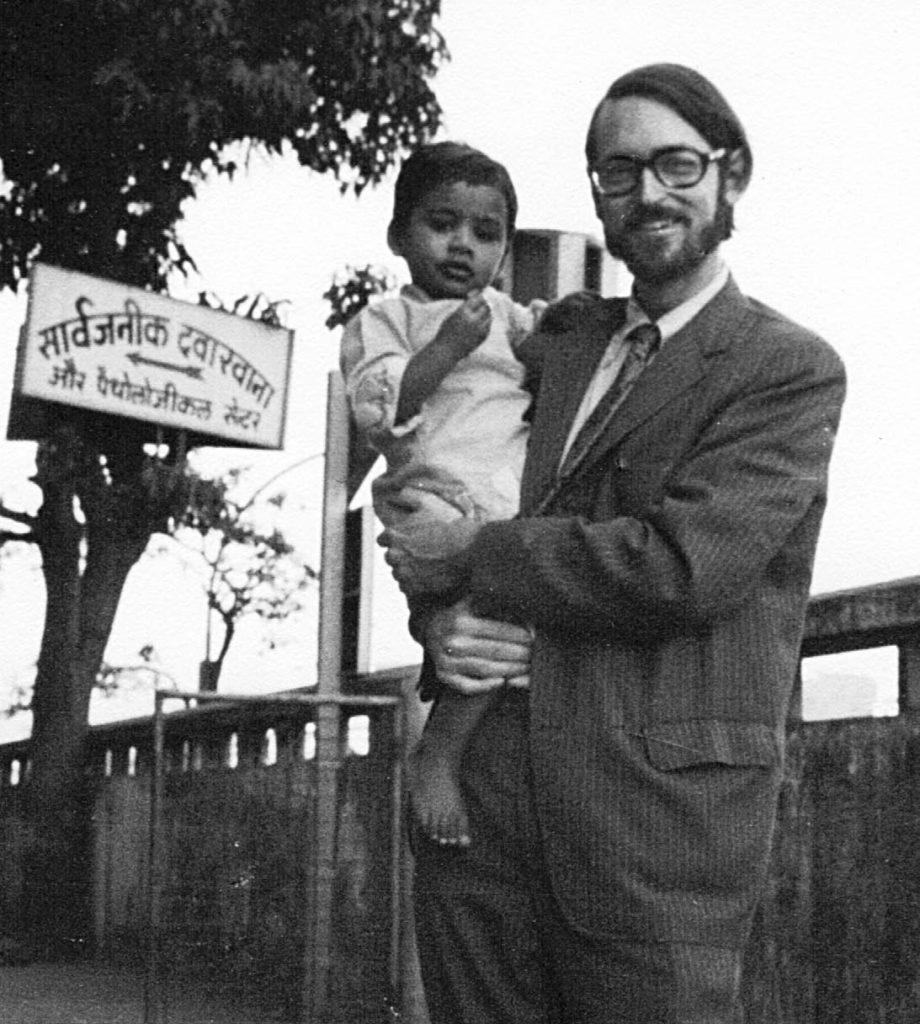
DM: Yes, his discovery of composition does foreshadow later developments of algebra. But what strikes me as well is Brahmagupta’s facility with and love of algebraic equations. I have a blog1 and this winter I wrote there on a curious observation. Every culture that has invented its own way of algebra also seems to have simultaneously invented ‘screwball problems’, that only they could solve using this new algebra. Brahmagupta is a very good example, with these really weird challenges which give rise to, for instance, 4th degree equations; and for which he alone has an ingenious algebraic trick which enables him to solve it. I mean, I know of course that he is famous for many things besides this, but it is his work on the foundations of algebra which has impressed me the most. Of course his work on quadrilaterals, as well as Pell’s equation too is well known.
Computers are quickly becoming both indispensable and intelligent, too. In the richly illustrated book titled “Indra’s Pearls”, you and your co-authors extend the role that computers usually play in fundamental research, going beyond generating streams of opaque numbers to actually unraveling hidden patterns, forms and insights. All of which would have arguably remained firmly out of reach of human imagination, especially of the visual kind. How do you see this coming together of computing and mathematics, and is it even a desirable union in the first place?
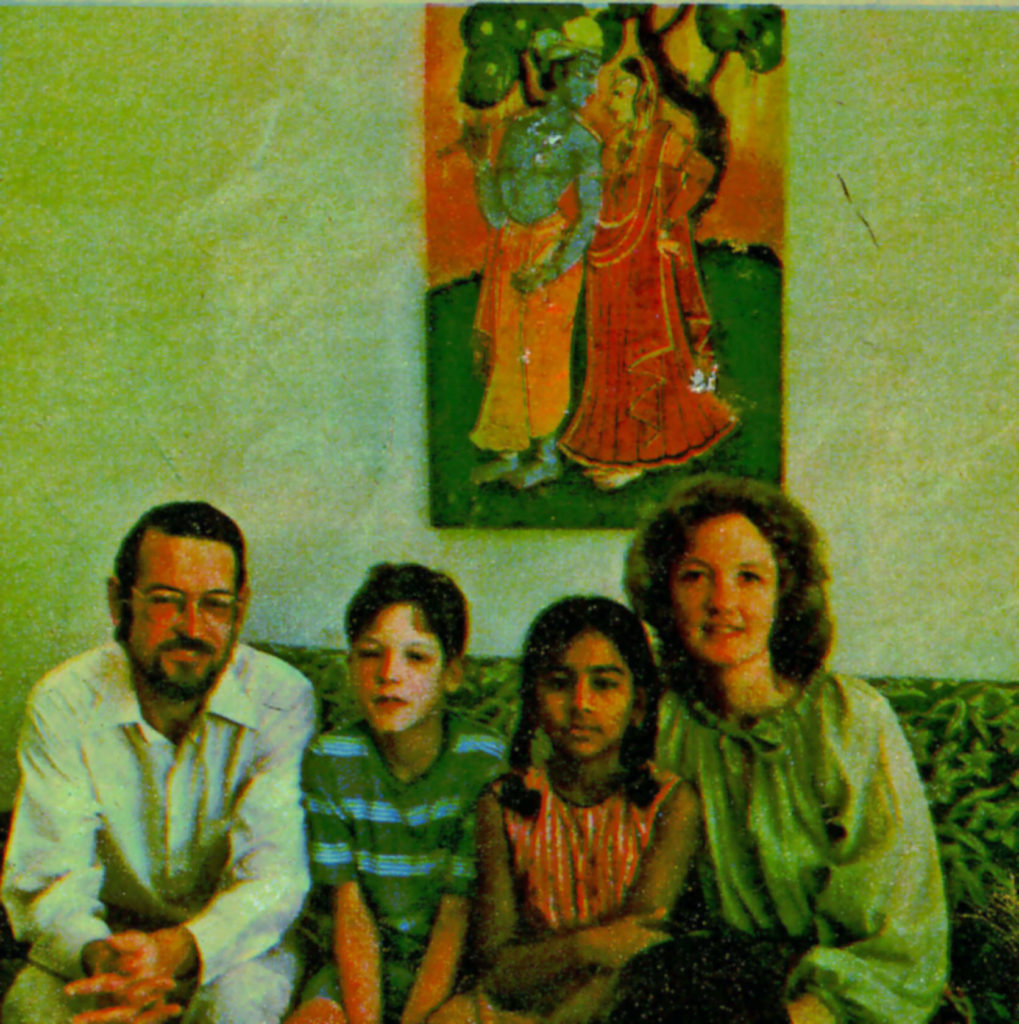
DM: Oh, yeah! Of course, the coming together of computing and mathematics is desirable for heaven’s sake. Look at Archimedes. He is equally at home with pure mathematics, applied mathematics, and numerical mathematics. He has this screwball problem about an odd shaped collection of fragments which can be assembled to form a bigger fragment. It is called the STOMACHION, and is all solved now using computers. Even his so-called ‘cattle problem’. I mean somebody solved it explicitly, and it has 140,000 decimals in it, and is a solution of Pell’s equations. The person who solved it plastered the walls of his office in the math department with sheets of paper that depict the big number, calling it ‘The Cattle of the Gods’. Mathematics and Computing were never two separate things. Gauss loved to compute things when he had his spare time, and it was his recreation to take another sequence of 100 numbers in the 1 to 2 million range, and calculate how many primes there were in that interval. It sounds like the snobbery of applied mathematicians that they think that they can separate the two. Without a doubt, for instance, in the area of nonlinear differential equations, computational simulations are absolutely crucial. I have a paper myself on Euler’s equation of fluid flow, in which I both computed and had a theoretical result.
The story of the Indian mathematician C.P. Ramanujam presents a poignant case of a man blessed with exceptional abilities, but who could yet not conquer his own inner fears and insecurities. You collaborated with him, and even authored a book with him. How important is it to maintain a healthy balance between the inner mental worlds that mathematicians create and comfortably inhabit, and the external world, where their actual physical lives are really lived out?
DM: CPR is not the only mathematician whom I know suffered from this illness. George Kempf was another who unfortunately had attacks of schizophrenia with which he struggled hard. He could pull out of them and be perfectly normal and active, and then fall prey to them once again. There is a general remark I would want to make, which is that there is a high proportion of theoretical mathematicians, who are somewhere on the autistic spectrum. Being on the autistic spectrum helps you construct the mathematical world as real as it has to be, for you to be a good mathematician. It’s certainly not a prerequisite, but sadly it does seem to be something which I feel is somewhat prevalent among mathematicians.
Your work has seamlessly straddled the worlds of both the purer and the applicable sides of mathematics, convincingly establishing that any divide that separates the two is not only limiting, but also artificial. Theta functions, traditionally studied by Algebraic Geometers and Number Theorists find themselves unexpectedly appearing in the dynamics of nonlinear wave propagation, so central to the transmission of information through light signals in Fiber Optic Cables. Is the time ripe to publicly dismantle the artificial barriers that stand between the pure and the applied aspects of Mathematics?
DM: Oh, yes. In my most recent interaction with non-linear wave propagation, I read about beautiful instances where you get exact solutions through theta functions; well, this turns out to be central in some studies of what are called rogue waves – 100 foot high waves which arise seemingly out of the blue in the deep ocean, where the average wave height is about 20 feet. The weather condition here is not involving hurricanes, and fairly normal ocean conditions but where you have large waves. And all of a sudden, you have this monster-like appearance of a rogue wave. And yes, the time has certainly come to dismantle the artificial barriers between pure and applied math, of course. The time has long passed. In fact it’s only recently that there has been any barrier. I think prior to WWII, there was no such barrier. von Neumann went back and forth effortlessly between the two. The barrier is one of the unfortunate corollaries of the Bourbaki hegemony.
What made you transition from Algebraic geometry to other areas of mathematics, including pattern theory/computer vision? Can you talk in detail about this transition, and your life at Brown University as a professor? Did it require mastering new jargon? What was that like? What was similar and what was different between the atmosphere at Brown University and Harvard University – both in terms of your colleagues, the Division, the broader university, as well as the curriculum and students?
DM: At Harvard, everyone is a world’s expert in their own particular field, and they also act like it. At Brown, just as in the undergraduate program, there is much much more collaboration. When I moved here, it was wonderful. I went to seminars in neuroscience, psychology, cognitive psychology, statistics, seminars in the engineering department, as well as seminars in pure math from time to time. I found it a much more collaborative place, and very stimulating as a result. I also don’t think I’ve ever really mastered the jargon of statistics properly. The statisticians have their own intuition, on what is called “sufficient statistics” and stuff like that. The field as a whole has its own framework, just as do math and physics. In physics, the whole idea of a proof is meaningless because you’re dealing with modeling the world; and the real pulsating world is already in existence out there, and the logical consistency of its existence is not something you need to prove. There’s no Godel’s theorem in physics.
In 1989, the world of academia was pleasantly surprised to note a paper that appeared in the Communications on Pure and Applied Mathematics, wherein you broke into the world of Computer Vision and Brain Studies. Please share your thoughts on this departure from Algebraic Geometry.
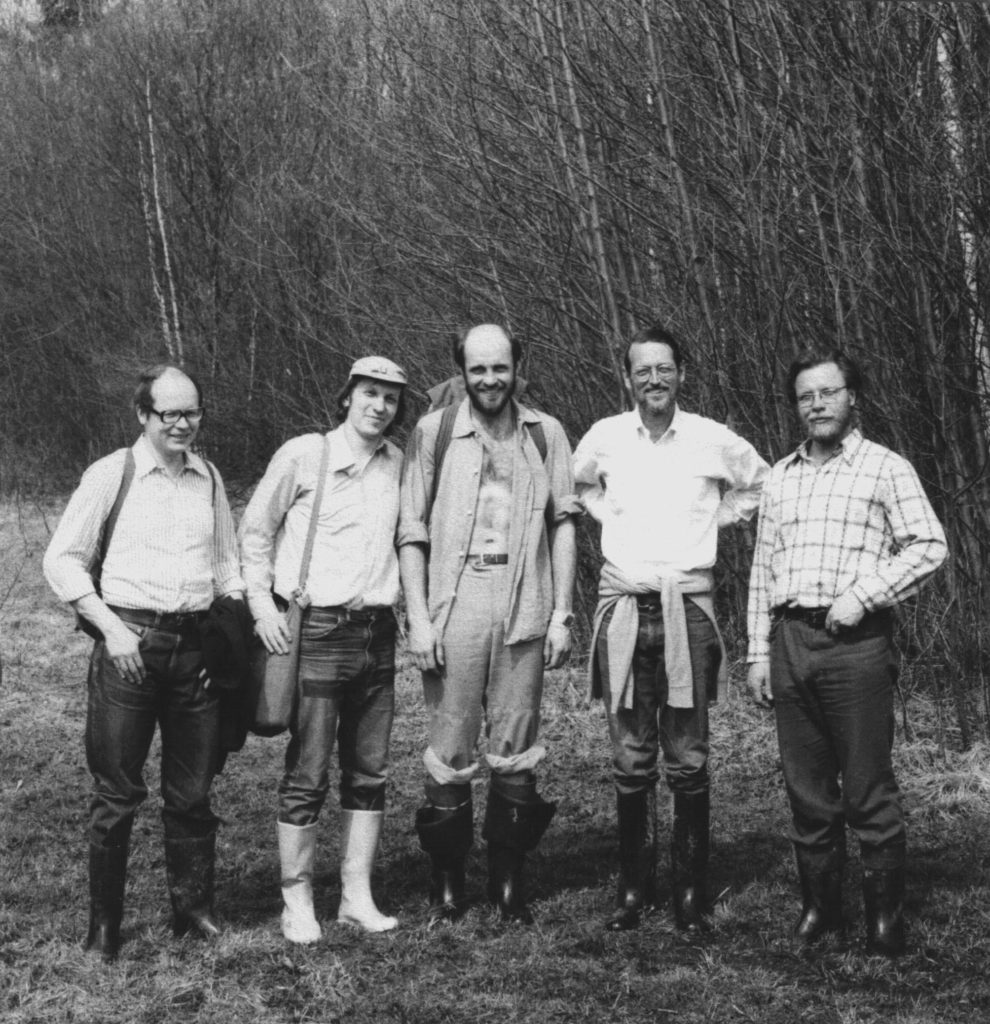
DM: I got into Computer Vision and Brain Studies, but I was never really a driving force in either. I was a fringe character. And if I had influence in Computer Vision and Brain Studies, it was through my students. In particular, my student Song-Chun Zhu who recently left UCLA to go to Beijing, and my other student Tai-Sing Lee in Neuroscience, have helped some of my ideas gain some currency. The paper which you are referring to, detecting objects, focusing on their edges, was this joint paper with Jayant Shah, which appeared in Communications on Pure and Applied Mathematics, and it’s called the Mumford-Shah model. At that time, computer vision was pretty rudimentary, and the idea of introducing a free boundary value problem seemed like a very natural thing to do. And that’s what we did. Jayant and I worked really hard to get our feet on the ground in Computer Vision and in Neuroscience.
What, in broad terms, is the philosophy underlying the use of Partial Differential Equations for problems in Computer Vision. Here we are referring to the idea that is now popularly called the Mumford-Shah functional, recognizing your work in this area, done with your collaborator, Jayant Shah, a mathematician at Northeastern University?
DM: The right way to view it, or the philosophy is this: In pure mathematics, the coin of the realm is a theorem, and if you have a theorem that had been previously conjectured, and especially if it had been conjectured a long time ago, that is the gold coin of the realm. In applied mathematics, a theorem is more or less an ancillary part of the work which is interesting, but not central. What is really central is a good model. A model which captures some aspect of the real world, which had not been described in mathematical terms previously. That’s why the Mumford-Shah thing did catch on to a certain extent. Engineers by and large want something that works right now, and that they can also use. The idea of backing off from solving the problem saying that we will first of all need to formulate it more abstractly using a variational problem, is a mathematician’s contribution. Jayant Shah is remarkable, with a great background in both mathematics and in engineering. It was a great collaboration.
What is the role of the late Swedish scientist, Ulf Grenander, in getting you interested in the area of Pattern Theory?
DM: Well, Ulf specifically was seeking the right approach to model cognitive issues, such as how do you really deal with individual concepts in your head, and connect them all together? He devised a graph-like system which to my mind is, one of the earliest graphical analysis of languages. It is somewhat akin to Roget’s Thesaurus. But graphs had been introduced by many different computer scientists in studying AI and the mechanisms of thought, but Ulf pursued it further, and with more significant ideas. So, I enjoyed him tremendously. He was a charming man, and inspired a lot of work also in analysing shape. He was the one who said – wrote an email actually – that read “Hold on to your seat belts. We are now going to propose a problem. We want a mathematical model of the shape of the entire human body including all its organs, its bones, its nerves, arteries and veins; we need to find not only the averages, but we need to find normal variations so that we can then quantify what’s an abnormal variation”. So he proposed this problem, and it’s indeed become a major enterprise now. It has also turned out of course to be infinitely harder than perhaps he had envisioned.
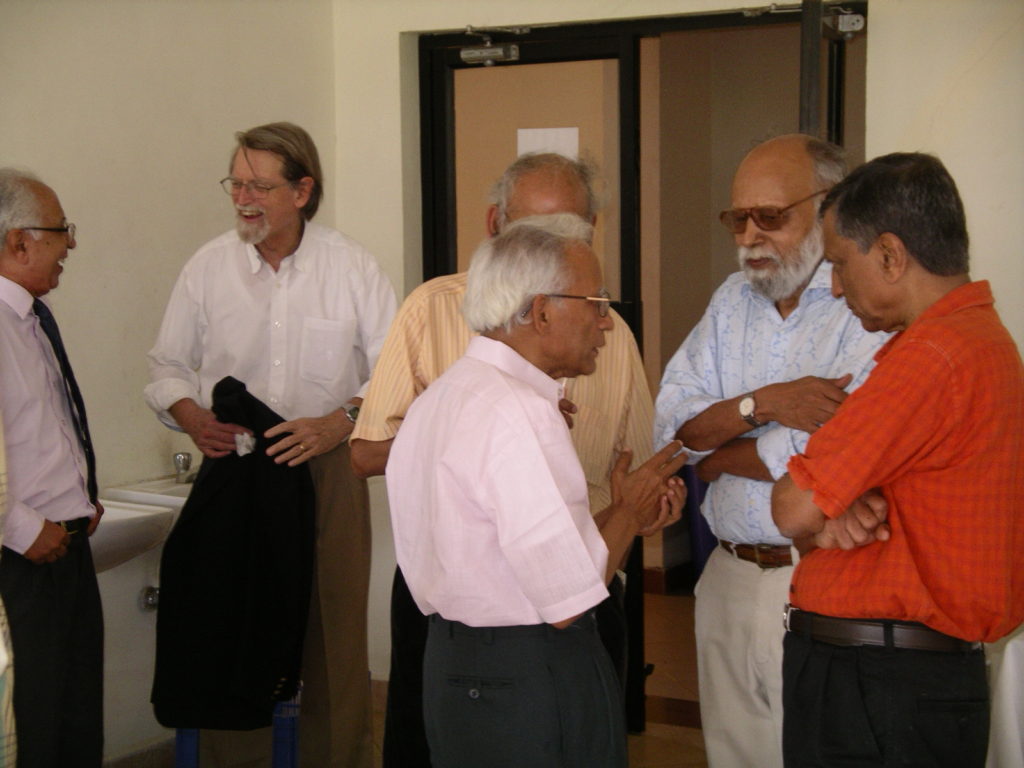 |
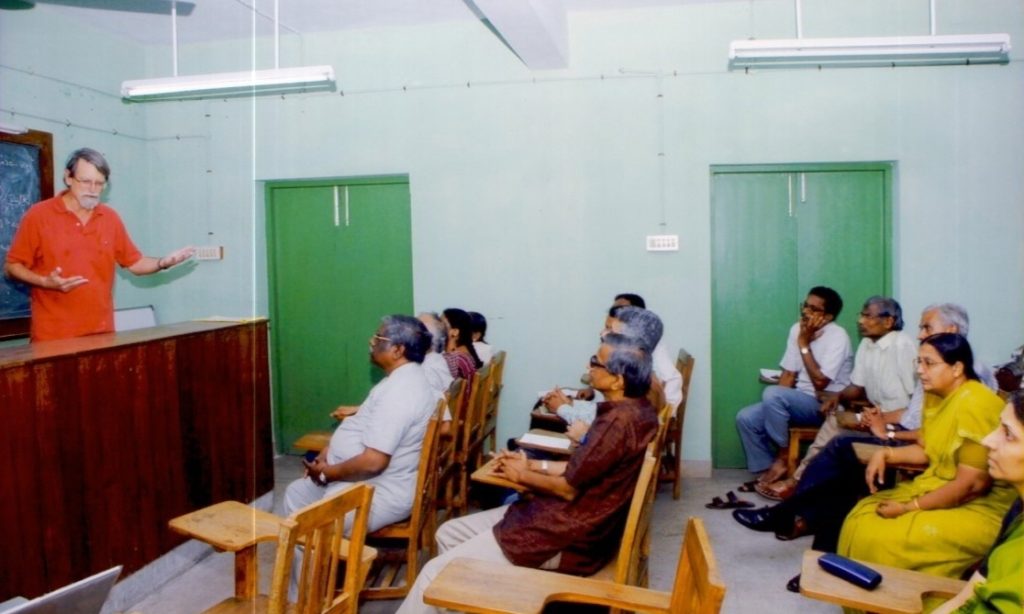 |
At the turn of this century, you had written an article about the “Dawning of the Age of Stochasticity”? Can you talk about the basic point you were trying to convey in this article? Did your own research touch upon these aspects? What led you to write this article, and what are your views on this subject twenty years later? Do you still see this as an important frontier? Or do you see new frontiers?
DM: You see, I was really impressed when I realised that Bayesian statistics could be used to further our knowledge of the processes of understanding, thinking and reasoning in AI. I saw how significant randomness was in Computer Science, especially in algorithms based on Monte Carlo methods, used for solving differential equations. It all sort of came together when people were asked to write big thoughts in the year 2000, right at the dawn of a new millennium. And so for me, this dawning of the age of stochasticity seemed to me to be a huge thing which we were heading towards, in the 21st century. When I was a student, in some sense probability theory was certainly seen as a sort of a poor cousin. I mean there were some interesting French players and characters, but it was not nearly as central as analysis, and what was called at the time modern algebra – that is to say groups, rings and fields; or even, say topology and geometry. So there was Probability theory, which via tracing its roots back to gambling, and counting corpses and other unsavoury activities, definitely did not have the intellectual standing that other more central areas of mathematics did. So, I felt that it should be rectified. I also had this sense that certain areas in pure mathematics were getting purer and purer, and more and more abstract. In my point of view, any new abstraction should be justified by solving a traditional problem in traditional areas of mathematics. Doing so demonstrates its strength, and also produces a new tool that can be used in classical problems. Abstraction for its own sake has become somewhat fashionable in some areas, but since I am not an expert in any of these, I don’t want to be more precise.
How do you compare the subject of Pattern Theory, versus the present rage in Computer Science, Deep Learning? Do you feel the latter field has scope for the development of deep mathematical theory?
DM: I was recently asked to give a talk on this in Moscow in honour of Igor Shafarevich. I mean the ideas of so-called neural nets go way back, but they didn’t seem to be as good as other algorithms and didn’t seem to be going anywhere. A few people were true believers, but then this amazing thing happened: huge data sets were accumulated because of social networking. At the same time, computers became vastly more powerful. Especially the discovery that you could take a graphical processing unit, the GPU and compute with those. You could compute neural net algorithms very effectively with these GPUs. So once this extra computing power, and all this data became available, Wow!. They began solving one problem after another. The thing which convinced me that this was indeed a new era, and that I really had to rethink and revisit what I had previously supported and proposed as being the essence of AI, was a paper by Stanford’s Christopher Manning. Manning and a student of his asked “How do these deep learning algorithms which analyse sentences work? Are they ‘discovering’ grammar?”
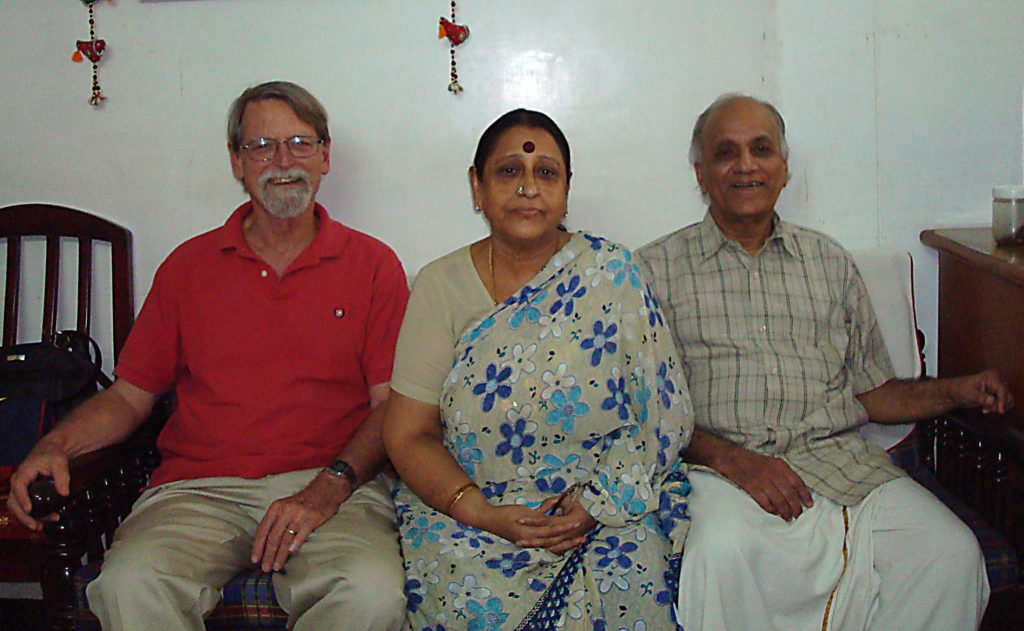 |
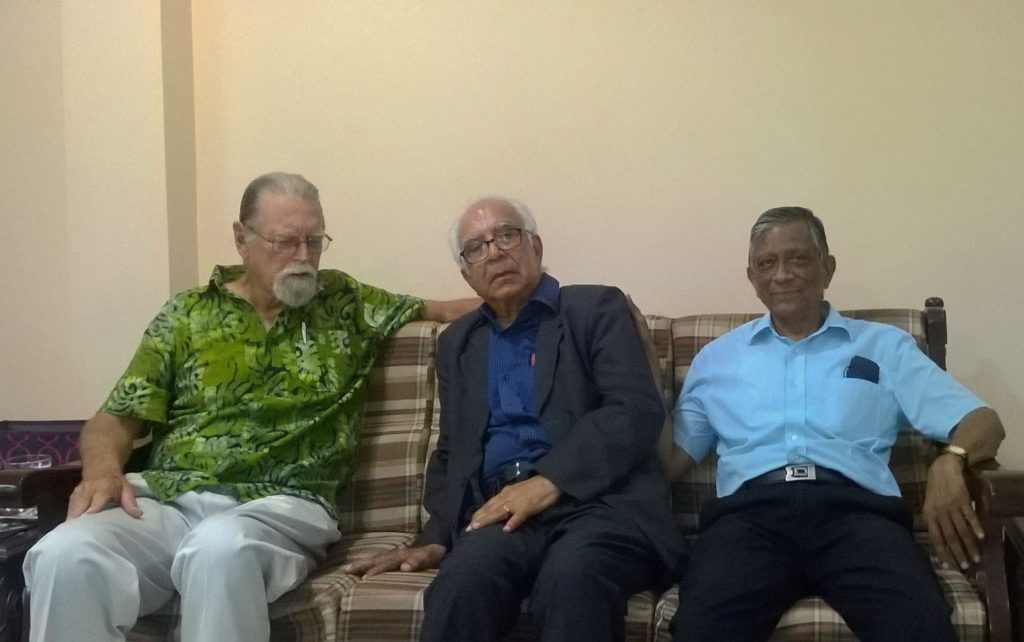 |
It had always been a question when I was involved in AI as to whether or not purely statistical methods fared better versus methods using explicit grammars from the Chomsky school, whether you could prove in computer experiments that grammars really helped in understanding language, or not! I don’t think there was any clear answer to that before. I should say prior to that, the first breakthrough was the whole idea of representing words themselves by real-valued vectors of high dimension. For instance, you can have a 500-dimensional vector representing a word. Why is this powerful? The reason is that words are connected to each other in many different dimensions.
Coming together of computing and mathematics is desirable for heaven’s sake
There isn’t one simple rule by which you link words. They are linked from grammatical similarities, from semantic similarities, from similarities in what kind of speech acts they occur in. So, it turned out that using very high-dimensional vectors to represent words, allowed you to deal with words incredibly more effectively. What Manning showed was that these huge high-dimensional representations of words (that were inputs for search engines like Google) already carried implicitly in them, the grammar of the sentence. Say you give these challenges to a computer algorithm where it has to analyse questions about sentences. Not direct questions about grammar at all, but questions such as ‘Is the second sentence here, an answer to the question posed in the first sentence’? Also, if I were to leave out some words in a sentence, then what are the most likely words you will put in their place? So, all kinds of similarities and significances were being worked out by these algorithms, but in some totally opaque way; and so, one wondered whether these representations actually dealt with grammar? And Manning had a very simple idea. Let’s project this 500 dimensional vector into, for instance, a 20 dimensional, or in general to a space of much lesser dimension; and then find out if there is some projection, in which the projected words reveal the grammar of the sentence. Let’s say the sentence has 15 words. You project each of those 15 words, via their high-dimensional representations down to, say a 20- dimensional space. Manning also had a very simple proposal for an algorithm whereby the tree-like structure of the sentence could be detected by using distances between these 20-dimensional vectors. And it turns out that about 80% of the grammar was in fact implicitly present in these high-dimensional representations. I mean, my own approach to it had been that we need to explicitly work out these grammatical connections. I mean, there is grammar in images as well as grammar in sentences. There are relationships that come about because one part of the image is actually connected to another part; or, that includes say, some other part. Certain things like eyes, and nose, and mouth are all as much a part of a face, as a wheel is a part of a car. So, these are some grammatical structures which images possess. In the last 6 months, I have become a convert. I mean, it’s very hard to say but probably there is still some merger that will take place. I think the next huge advance is going to be robots which learn to both move and see simultaneously, just like a baby does, and this is going to knock people’s socks off – because it’s going to be so disconcerting to have robots that can actually move around like animals.
I lived 5 months on this boat going around the Caribbean
From the Fields Medal in 1974, to the Shaw Prize, Steele Prize, Wolf Prize, and the National Medal of Science, you have won it all. Despite the difficulty in choosing one above the other, is there a body of work that you are truly happy to have done, and contributed to. If so, what is it? And why would you choose this over others?
DM: I mean it’s embarrassing. I feel that there is a certain kind of thing that happens when you win one prize, which is that other prize committees see your name, and they think ‘Oh! This person is part of this group’. I remember the East Germans talking about the Reisekader – a group of people who could get visas to travel under the communist regime in East Germany. I think you have an analogous sort of prize cadre. You become acceptable, and so one prize leads to another. I think winning prizes is kind of an ingrown, and rather incestuous business. What I am really happy to have done is to have played around in mathematics. I mean, to me personally, the work on moduli was fabulous and I enjoyed it tremendously. It was just so much fun. AI is equally amazing, and so has been Neuroscience and the history of math. I have a whole blog about the philosophy of Spinoza. I have enjoyed each and all of these.
The time has certainly come to dismantle the artificial barriers between pure and applied math
You are a keen sailor, and own a yacht. Can you talk about how you developed this interest? And whether you still pursue this avocation? Can you talk a bit about any other hobbies or passions that you have aside from mathematics?
DM: I am a sailor. But, I don’t own a yacht at this point. When you get older, you are definitely not as agile as you were when you were younger. I love the water and certainly do not regret all the long trips I have taken on boats. I mean the longest was when I lived 5 months on this boat going around the Caribbean.
Can you talk a bit about the role played by the people in your life (family and non-mathematician friends), if any, in helping create an environment that allowed you to pursue mathematics at the highest level?
DM: Oh, yes. People are different but there is no way in the world that I could have led such a satisfying life, and been so fortunate and lucky, without having been just as fortunate and lucky in my family life as I was in my mathematical life. Maybe some people can live like monks, but not me. People are different from each other. My family has been a huge anchor for me.
How did you meet your first wife, Erika? And what was her relationship with India? And how did the decision to adopt an Indian girl come about?
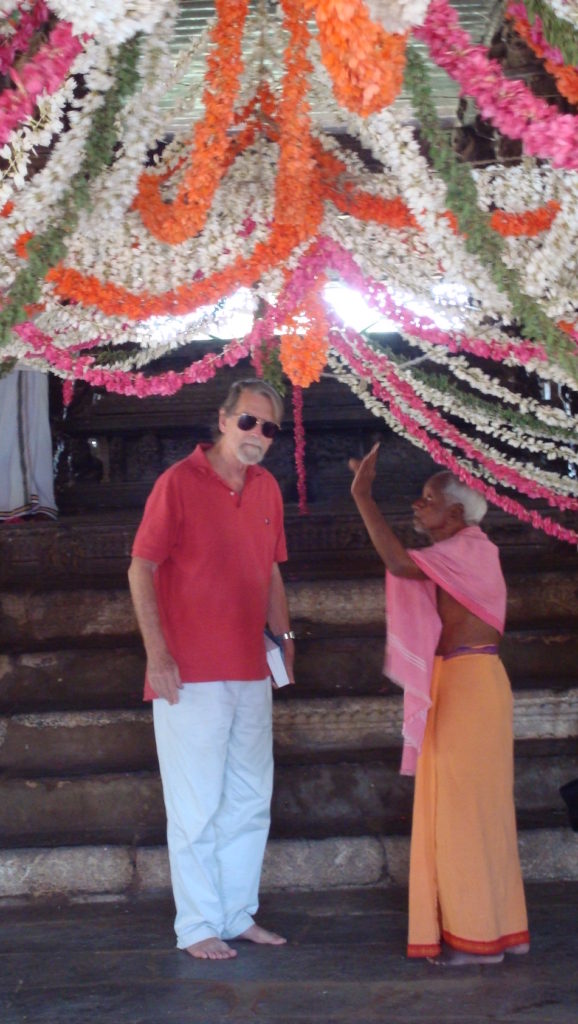
DM: My first wife was a student at Radcliffe. I met her in our senior year (fall, 1956) through a friend who had a copy of the photo album Radcliffe put out with all the incoming Freshmen. Her photo had ponytails pinned up like a crown, a German style she had worn before coming to the US. She was fascinated with all the religions and myths in the world and jumped at the chance to spend a year in Bombay (as it was called then) and learn more about the Purāṇas, etc. As for Suchitra, we really wanted a girl after bringing three boys into the world and with all our friends in Bombay, it seemed possible. Rohit Parikh and I had been roommates at one point in Cambridge and his mother was part of the large Gujarati community in Bombay. She was the one who opened doors for us.
Finally, do you have any advice for young and aspiring mathematicians?
DM: The thing that I have to say is 20,000 hours. The number comes from these Cuban cigar rollers. These ace rollers try to figure out how long it took them to reach the highest professional standard in rolling cigars, and so they quantify this by estimating how many hours they had to practice rolling cigars, before they got there. I think that’s exactly the same number of hours that’s needed of a mathematical graduate student in order to become a professional mathematician. I mean you have to be in love with it. If you are not in love with it, you are never going to be a successful research mathematician. Especially in so-called pure mathematics, you have to essentially believe in the reality of the mathematical universe and trust me it’s indeed real. I mean philosophers sometimes refer to it as the platonic universe.
In my view, any new abstraction should be justified by solving a traditional problem in traditional areas of mathematics
On that note, Professor David Mumford, we thank you for taking time to speak with us despite your various engagements. We wish you robust health, mathematical enjoyment and continued research productivity in the years to come.
Acknowledement: The authors would like to thank Shilpa Gondhali of BITS Pilani–Goa campus, and Aditya R Bharadwaj, a 16 year old Junior High student from the class of 2022 of Lynbrook High School, San Jose, CA for help in transcribing the article. They would also like to thank Sharon Lauer, present Head of Unquowa School, at Fairfield, CT for providing enthusiastic help in digging out archival material of the school David Mumford attended in the ’40s. \blacksquare
